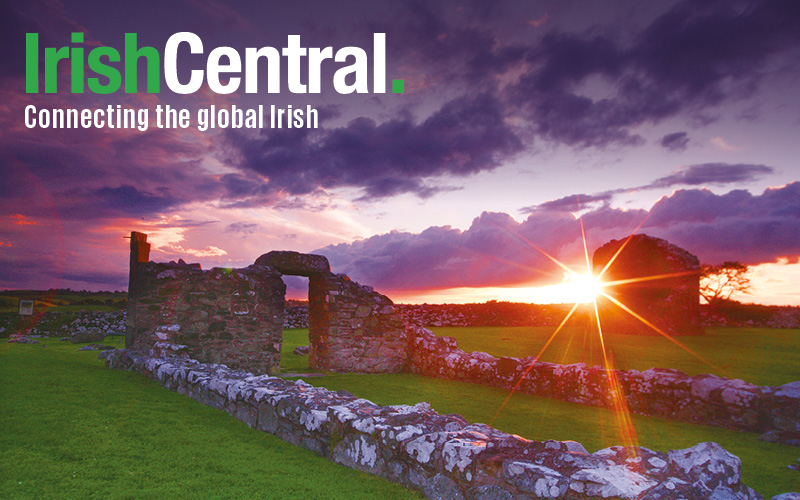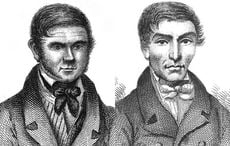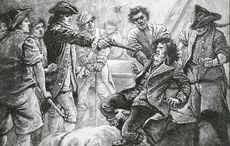Galbally: Learning about small Irish village life and my ancestors who lived it.
It is the last Friday night in August 2017, the beginning of the weekend festival in the tiny village of Galbally, in the Parish of Galbally and Lisvernane. It is in southeast County Limerick, on the Tipperary and Cork border, at the western end of the beautiful Glen of Aherlow, looking out to the Galtee Mountains. Village population is around 260.
I am sitting in Fraser’s pub and it is full. It seems like almost everyone from the village is there and people are sitting around, taking it in turns to sing. Each time a singer starts, the pub becomes silent. Most of the songs I have never heard before, songs of rebellion, local heroes, famine, hardship, hope and the beauty of the Glen of Aherlow. This is rebel territory.
I am the only “stranger” in the pub but by now I know most of them. I have been in Ireland for almost three months and this is my third trip back to Galbally. They sing a song especially for me and the next night at the Galbally concert (where, I’m sure everyone is there), they announce my presence, saying I am welcome, as genetically, I am one of them.
How did I come to be in Fraser’s Pub? My name is Tania Sweeney (the Sweeneys were from Ballysadare, Sligo, but that’s another unfinished story). I live just north of Sydney, Australia and I’m on a mission to find my Troy (probably originally Tuohy or Trehy) family heritage.
My mother was Stella Troy. My maternal grandfather was William Patrick Troy who was born and lived in inner Sydney. His father, William Patrick Troy came from Limerick (I had no idea whether it was Limerick city or county). William senior’s marriage certificate states his father was Patrick William Troy and his mother Margaret Murphy (easy to find a Murphy in Ireland!).
Want to learn how to trace your roots? Tickets for the Genealogy Event 2018 are on sale now
Not a lot of material to help find my Troys in Ireland. The research I undertook to reach Galbally is a story for another day. Key breakthroughs were finding:
- A newspaper advertisement placed by William Troy in 1865 from Brisbane, seeking John Troy his brother, from Galbally Parish, County Limerick. John had arrived on the Commodore Perry in 1858. Through Ancestry, I found a John Troy listed in Melbourne with the same parents’ names as my Patrick.
- The Tithes record for a Patrick Troy listed in Curraghkilbran townland, Galbally Parish. Griffiths Valuation gave me the Troy land lot numbers.
- The National Library of Ireland Roman Catholic Parish records online gave me the Troy/ Murphy marriage record and their five children’s baptism records with the names of witnesses.
-
Ireland Reaching Out (Ireland XO). Their local Galbally contact, Josephine McNern (nee Fitzgerald) turned out to be a very distant Murphy relative with family connections to Galbally Parish. (Josephine and her husband Paul have now opened a small tour company called “ Donegal Scenic Travel” based in Carrick, Donegal, for which I was a grateful market tester). Josephine provided invaluable leads about the Troy and related family histories that included family life leases across villages and Troy/Murphy intermarriages across Kilbehenny and Curraghkilbran and also Doon, County Tipperary. She knew that the Murphys were still living down the Black Road in Kilbehenny! Visit www.Irelandxo.com for more information
The night in Fraser’s pub was the culmination of a long journey, putting pieces together to understand my maternal family history and Irish history. I reflected on my visit to Ireland, meeting and mixing with people in Galbally (village and parish). This visit had taught me more about the value of oral history and more about Irish history than I could learn in a lifetime from databases and books.
The first step had been to get to Curraghkilbran and find some locals who knew the history of the area or could tell me who might. I booked into John and Carmel Frewen’s Homeleigh Farmhouse, in Ballinacourty, on Tipperary, not far from Galbally village. The Frewen family had been in the Glen for generations. They knew its history and the family networks. John Frewen could tell me the original name of Curraghkilbran was “Currach Chill Bhreathnach”. Many of the descendants of those families named on my Troy family baptism and other records still lived in the area. A good first lesson here!
I set out to walk to Curraghkilbran, to find the parcels of land now owned by Mrs. McSweeney and the Dalys, when a car pulled up beside me. “Hop in!” It was Carmel Frewen. Off we went to Curraghkilbran. Spotting a sign that said “No entry” we ignored it and up the road we went to meet farmer Tom Fraher, a friend of John Frewen. “I know Mrs. McSweeney” said Tom “ I’ll take you around but I think she’s out”! So Tom, Tom’s son Killian, Carmel and I all piled into Carmel’s small car and around we went! Tom turned out to be Nora’s son-in-law.
Indeed, Nora was out but after tea and cake the next day, Nora showed me around the original Troy lands, giving me the phone number of Willie Daly, current owner of the other parcel. The Daly family had had the land since it was subdivided by Patrick Troy in 1865, the year my great grandfather left for Australia.
I contacted Willie…. “Who’ll be wanting him then”. I thought I had no chance of success here! How wrong I was! I had moved to Thormond House, a wonderful B&B in the heart of Galbally village, owned by Steve and Geraldine Patten. The Pattens were enthusiastic about my research and drove me to Ballylanders to meet Willie Daly.
I had been invited for tea to meet his wife Helen and their children, his brother Mickey, his sister Margaret and his cousin Charlie Richardson. They all arrived with their original and more recent maps, documents and stories. They relayed their grandmother’s story of her milking cows on Troy land. Their grandfather had asked for prayers to be said at the church when Paddy Troy died.
Over the course of my three visits to Galbally, Willie, Charlie and Moss Fitzgerald, from nearby Kilbehenny Community Centre took me to visit the Troy land and surrounding areas. Charlie in particular was an expert on Irish history.
My second lesson was about the value of the Duchas Schools Collection. Willie pinpointed the exact spot where the Troy mud house had been. I showed him the Schools Collection essay that referred to William Troy (Patrick) living beside the double ditch on what had become the Daly farm. I think everyone in Curraghkilbran knew the double-ditch! This Collection is a valuable source of information about village history generally.
The third lesson was about (non) payment of rents to the landlords. Charlie pointed out that the McSweeney house seemed to be built over the neighbour’s boundary. If a building was constructed across two blocks of land, and the person who had built across had not paid rent to the landlord, and the other lessee had, then the non-payer could not be evicted. This provision was enshrined in legislation. Hence there are encroachments of buildings onto neighbouring land all across Ireland. The ingenious Irish!! I’m not sure yet whether non-payers are listed in the Tithe defaulters.
Want to learn how to trace your roots? Tickets for the Genealogy Event 2018 are on sale now
My fourth lesson was learning more about leases. Patrick Troy leased Curraghkilbran land between 1826 and his death in 1878. In Patrick’s will (registered in Mitchelstown, County Cork, the administrative centre for this border region, of course!) he provided a sum for each of his sons and the land he held at the time of his death was to be disposed of by his wife. Why didn’t his wife or three daughters inherit (assuming his daughters didn’t die in the famine)?
Charlie explained to me how leases had worked:
- Leases were granted to those whom the landlord thought would be good tenants. I can only assume that my gg grandfather Patrick Troy, having a large number of acres and for so long, was a good tenant.
- The granting of leases, the amount of rent paid and lease transfers had to be approved by the landlord.
- There could be three names on a lease. Leases could be for life. The youngest child’s name would be included on a lease to ensure a lengthy lease period.
- The eldest son was usually the recipient of the lease, so other sons (and daughters) had to find their support elsewhere, a major incentive to emigrate (along with the famine. Galbally Parish population had dropped from 6,651 in 1841 to 4,635 in 1851).
- Women rarely received a lease, although the lease could be included in a woman’s dowry.
Lesson five was about intermarriages between families. Marriage was a strategic alliance between families, not just a convenience or tradition. This helped to build up bigger parcels of leased land. Charlie showed me the Murphy land immediately adjacent to the Troys. And, apparently, first and second cousins didn’t usually marry, so I knew untangling my Troy and Murphy family histories was going to be a challenge!
Lesson six was about village settlement. The concept of individual ownership of land parcels didn’t emerge till 1760 or 1780, so records will not exist. People lived in a village group arrangement. Houses were at the highest point on the land, further down were the gardens, and then, in order, corn, cattle and hay fields.
Lesson seven was about burials. I had hoped I would find Patrick Troy’s grave in the Kilbehenny graveyard as requested in his Will. Moss had kindly given me a tour of the graveyard and of the Kilbehenny area. We did not find Patrick’s headstone, he may have been too poor. Charlie had explained that landlords had to approve a person having a burial headstone. So this remains a mystery.
Why Kilbehenny? Would his wife and daughters be buried there? I had read that there had been an Irish custom of husbands and wives being buried with their own kin, not with each other. Charlie noted that, in this part of the world, girls were usually buried with their father.
Further learnings about the role of matchmakers, the management of land and the impact of the Land Commission, tenant housing and “famine roads” built for employment generation will have to wait till the next visit.
And yes, I did find the Murphy home at the end of the Black Road but they were not home at the time. That is for the next visit when I will join in the singing at Fraser’s Pub with “Galtee Mountain Boy” (albeit with an Australian accent)!
And my parting gift from Galbally? A bag of stones from the River Aherlow, running adjacent to the Troy land, given to me by Willie Day and washed in Geraldine Patten’s dishwasher (Australian customs were impressed by Irish ingenuity)!
Want to learn how to trace your roots? Tickets for the Genealogy Event 2018 are on sale now




Comments